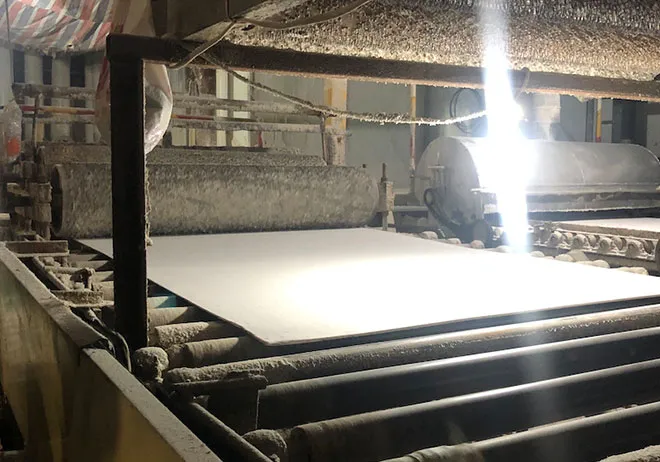- Afrikaans
- Albanian
- Amharic
- Arabic
- Armenian
- Azerbaijani
- Basque
- Belarusian
- Bengali
- Bosnian
- Bulgarian
- Catalan
- Cebuano
- Corsican
- Croatian
- Czech
- Danish
- Dutch
- English
- Esperanto
- Estonian
- French
- German
- Greek
- Hindi
- Indonesian
- irish
- Italian
- Japanese
- Korean
- Lao
- Malay
- Myanmar
- Norwegian
- Norwegian
- Polish
- Portuguese
- Romanian
- Russian
- Serbian
- Spanish
- Swedish
- Thai
- Turkish
- Ukrainian
- Uzbek
- Vietnamese
11월 . 09, 2024 10:32 Back to list
Exploring Alternative Materials for Ceiling Grid Systems and Their Drop Percentage Factors
Exploring Drop Ceiling Grid Materials A Comprehensive Overview
Drop ceilings, also known as suspended ceilings, are an essential element in commercial and residential spaces that not only enhance aesthetic appeal but also contribute to soundproofing and thermal insulation. One of the most critical components of a drop ceiling system is the grid framework, which supports the tiles and panels. Understanding the various materials available for drop ceiling grids is crucial for making informed design and budget decisions. This article explores the common materials used for drop ceiling grids, their properties, and their applications.
1. Metal Grids
Metal is one of the most traditional materials used for drop ceiling grids. Typically made from galvanized steel or aluminum, metal grids are favored for their durability and strength. They are resistant to warping and damage, making them ideal for high-traffic areas or places prone to moisture, such as basements or kitchens.
Pros Metal grids offer high load-bearing capacity, which allows for the installation of heavier tiles or fixtures. They also feature a sleek, modern appearance, making them suitable for contemporary designs.
Cons One drawback is that metal grids can be relatively more expensive than other materials, such as PVC. Additionally, metal is susceptible to corrosion if improperly treated or exposed to certain environments.
2. PVC Grids
PVC (Polyvinyl Chloride) grids are a popular alternative to metal due to their lightweight nature and versatility. PVC grids are resistant to moisture, making them ideal for humid environments. They can be easily installed and removed, providing flexibility in maintenance and design adjustments.
Pros Unlike metal, PVC grids do not rust or corrode, making them a great option for bathrooms or other high-humidity locations. They are also available in various colors and finishes, allowing for greater design creativity.
Cons However, PVC grids may not offer the same level of support for heavier tiles or fixtures as metal grids. They might also be less fire-resistant, which could be a consideration depending on the intended application.
drop ceiling grid materials

3. Wood Grids
Wood can provide a unique and warm aesthetic to drop ceilings, making it an excellent choice for residential spaces or businesses aiming for a cozy feel. Wood grids can be stained or painted to match different decor styles, adding a touch of elegance to any room.
Pros The beauty of natural wood adds character and charm, which can enhance the overall design. Wood is also biodegradable, making it a sustainable choice when sourced responsibly.
Cons On the downside, wood grids are not as moisture-resistant as metal or PVC, making them unsuitable for damp environments. They can also be more prone to warping over time. When considering longevity, regular maintenance is essential.
4. Acoustic Grids
Acoustic grids are specially designed to improve sound absorption in spaces like offices, recording studios, and theaters. These grids often incorporate materials that help to dampen sound, which can be particularly beneficial in noisy environments.
Pros Acoustic grids significantly reduce noise pollution, enhancing communication and comfort. They are typically made from composite materials that combine durability with sound absorption properties.
Cons The primary drawback is the cost associated with these specialized grids. They may be more expensive than standard metal or PVC grids, which can impact overall project budgets.
Conclusion
Choosing the right material for a drop ceiling grid involves weighing the pros and cons of each option. Metal grids provide strength and a modern look, while PVC grids offer flexibility and moisture resistance. Wood grids present a unique aesthetic but require careful maintenance, and acoustic grids can enhance sound quality in specific environments. Understanding the intended use and design goals of a space will guide the selection process, ensuring that the drop ceiling not only meets functional requirements but also enhances the overall aesthetic ambiance.
-
Transform Interiors with PVC Gypsum Ceiling: A Stylish, Durable, and Moisture-Resistant SolutionNewsMay.19,2025
-
The Smart Interior Upgrade: Discover the Durability and Versatility of Gypsum Ceiling Access Panel SolutionsNewsMay.19,2025
-
The Smart Choice for Interior Design: Discover the Value of PVC Gypsum Ceiling SolutionsNewsMay.19,2025
-
Mineral Fiber Ceiling Tiles: The Smart Blend of Performance and AestheticsNewsMay.19,2025
-
Mineral Fiber Ceiling Tiles: The Superior Choice Over Gypsum for Sound and Fire SafetyNewsMay.19,2025
-
Mineral Fiber Ceiling Tiles: Eco-Friendly Strength and Style for Every CeilingNewsMay.19,2025







